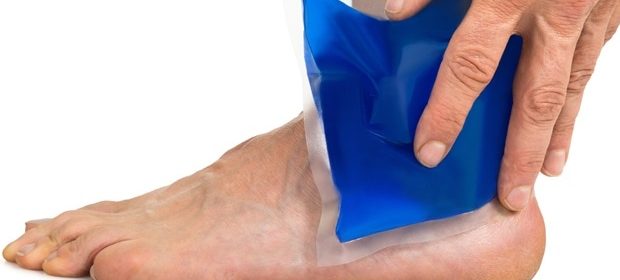Diagnosis of Athlete’s foot

Athlete’s foot is fungal infection of the skin over the foot and more often than not may be diagnosed by clinical examination alone.
Sometimes what is not visible to the naked eye may show up with the help of a Wood's lamp (black light).
Tests for Athlete’s foot
Tests that confirm the diagnosis include (1, 2, 3, 4, 5) –
- Fungal culture or skin culture
- Skin lesion KOH or Potassium hydroxide exam
- Skin lesion biopsy
Fungal culture
A fungal culture is used to find the fungi in the infected lesion.
For the test the doctor may take skin samples over the affected area by lightly scraping the skin with a sharp blade or the edge of a slide used under microscope.
Clippings of nails may also be taken.
The sample is then stained with special dyes and chemicals and examined under the microscope.
The sample may also be incubated in a suitable medium for growth.
In presence of the fungi over a few days growth of the fungi may be noted in the laboratory. This is diagnostic of the infection.
A fungal culture is needed to detect the actual cause of the infection of the feet.
Sometimes there may be persistent redness and itching over a particular area making diagnosis difficult. A fungal culture may be useful in these cases.
If fungi arte found on examination the type is determined and the therapy is prescribed accordingly.
Skin lesion KOH exam
This is a specific test for fungal lesions. The health care provider uses a blunt edge or blade or a microscope slide to scrape of dead skin over the lesion.
The skin samples as well as nail clippings so obtained are placed in a liquid containing potassium hydroxide or KOH.
The KOH destroys all non-fungal cells. Now when the sample is viewed under the microscope the fungi affecting the individual may be identified easily.
This test is usually painless.
Skin lesion biopsy
This involves removal of a small bit of the affected skin.
Before the biopsy a local anesthetic is injected in and around the lesion in order to render it numb to pain.
Biopsy may involve various types:
- Shave biopsy
- Punch biopsy
- Excisional or Incisional biopsy
Shave biopsy does not involve cutting the skin and is least painful. Only the outermost layers of skin are removed for examination.
Punch biopsies punch out a tiny hole and take a small sample of deeper skin tissues as well.
This is usually done using a sharp, hollow instrument. A single stitch may or may not be required.
Excisional biopsy removes the whole lesion. This needs stiches to close the skin over the operative site.
If the lesion is large skin grafts or flaps may be needed to cover the operative area.
An incisional biopsy takes part of the lesion for tests.
A skin lesion biopsy in athlete’s foot is performed to exclude a chronic skin infection, non-cancerous tumors, skin cancers and other skin diseases that may mimic athlete’s foot.
Sources
- http://www.ncbi.nlm.nih.gov/pubmedhealth/PMH0001878/
- http://www.ncbi.nlm.nih.gov/pubmedhealth/PMH0004295/
- http://www.ncbi.nlm.nih.gov/pubmedhealth/PMH0004221/
- www.mayoclinic.com/…/DSECTION=tests-and-diagnosis
- www.webmd.com/…/fungal-culture-for-athletes-foot#hw28973
Further Reading
- All Athlete's Foot Content
- What is Athlete’s foot?
- Athlete’s foot Causes
- Athlete’s foot Symptoms
- Athlete’s foot Treatment
Last Updated: Jun 4, 2019

Written by
Dr. Ananya Mandal
Dr. Ananya Mandal is a doctor by profession, lecturer by vocation and a medical writer by passion. She specialized in Clinical Pharmacology after her bachelor's (MBBS). For her, health communication is not just writing complicated reviews for professionals but making medical knowledge understandable and available to the general public as well.
Source: Read Full Article